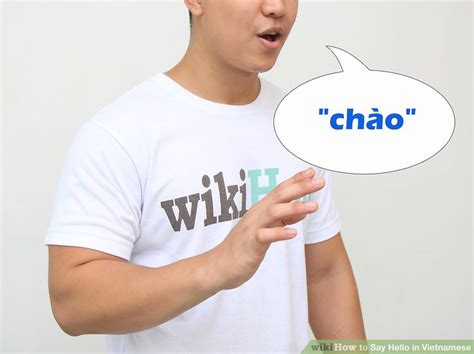How To Say Hi in Vietnamese: A Quick Guide for Beginners
Learning a new language can feel daunting, but starting with simple greetings is a great way to build confidence. Vietnamese, with its beautiful tones and unique vocabulary, might seem challenging, but saying "hi" is surprisingly easy! This guide will teach you several ways to greet someone in Vietnamese, along with cultural nuances to make your interactions even smoother.
Common Ways to Say "Hi" in Vietnamese
The most common way to say "hi" in Vietnamese is "Chào" (pronounced chow). It's a versatile greeting suitable for almost any situation, from formal settings to casual conversations.
Variations and Nuances:
-
"Chào buổi sáng" (pronounced chow bwee-sang): This translates to "Good morning." Use this greeting from sunrise until around noon.
-
"Chào buổi chiều" (pronounced chow bwee-chee-ew): This means "Good afternoon" and is appropriate from noon until sunset.
-
"Chào buổi tối" (pronounced chow bwee-toy): This translates to "Good evening" or "Good night" and is used from sunset onwards.
-
Informal Greetings: Among close friends, you might hear informal greetings like "Hey!" (pronounced just like in English) or "Alo" (pronounced ah-low), similar to "hello" on the phone. However, stick to "Chào" in most situations, especially when meeting someone for the first time.
Beyond "Hi": Adding Politeness and Respect
Vietnamese culture places a strong emphasis on respect. While "Chào" is perfectly acceptable, adding a few extra words can show your politeness and consideration:
-
Adding "ạ" (pronounced "ah"): This is a politeness marker added to the end of sentences, particularly when speaking to elders or someone in a position of authority. For example, "Chào ạ" (pronounced chow ah) shows extra respect.
-
Using Titles: Addressing someone by their title (Cô for a woman, Bà for an older woman, Chú for a younger man, etc.) shows respect. Combining this with "Chào" is a highly polite way to greet someone. For example, "Chào cô ạ" (pronounced chow coh ah). However, using titles requires careful consideration and understanding of Vietnamese social hierarchy; if unsure, sticking to "Chào" or "Chào ạ" is safest.
Practicing Your Vietnamese Greetings
The best way to learn is to practice! Try saying "Chào" and its variations out loud. You can find audio pronunciations online to help you perfect your tone and pronunciation. Remember, even a small effort to greet someone in their native language will be appreciated.
Mastering the Tones
Vietnamese is a tonal language; the meaning of a word changes depending on the tone. While getting the tones perfect takes time and practice, focusing on clear pronunciation and using the correct greeting for the time of day will go a long way.
Conclusion: Start Your Vietnamese Journey Today!
Learning to say "hi" is just the first step in exploring the beautiful Vietnamese language. With a little practice and attention to cultural nuances, you'll be able to confidently greet people and make a positive impression. So, start practicing "Chào" today and embark on your Vietnamese language learning adventure!
